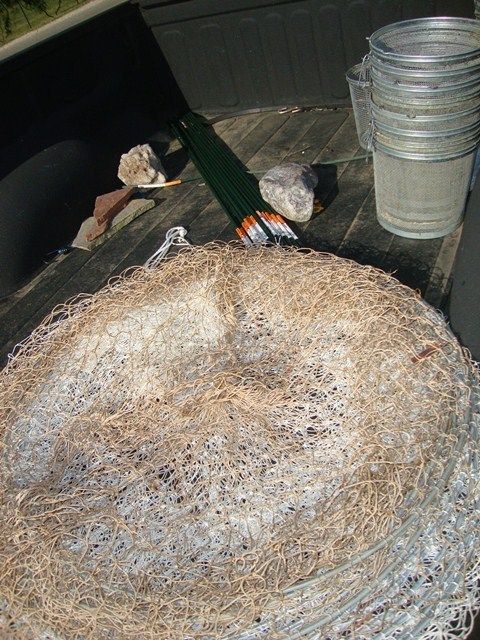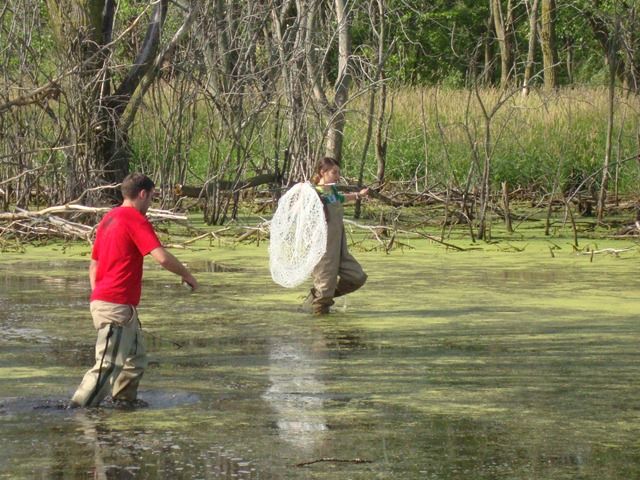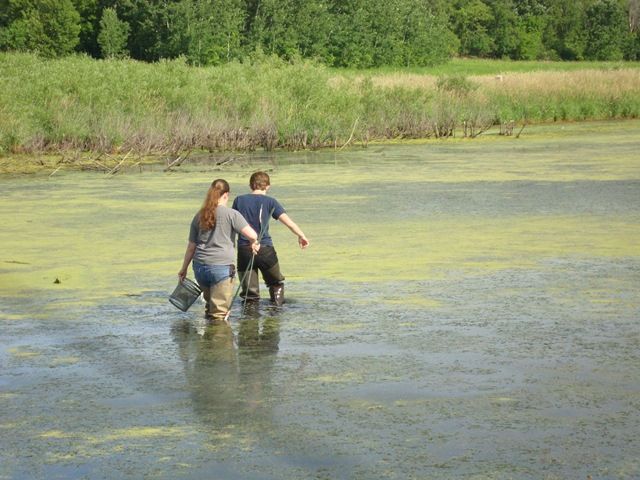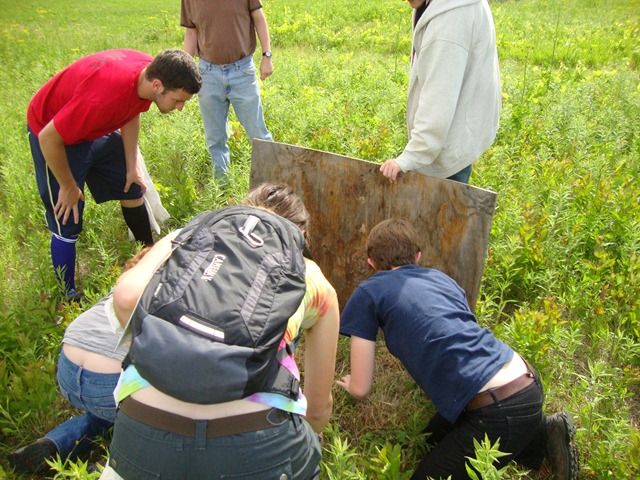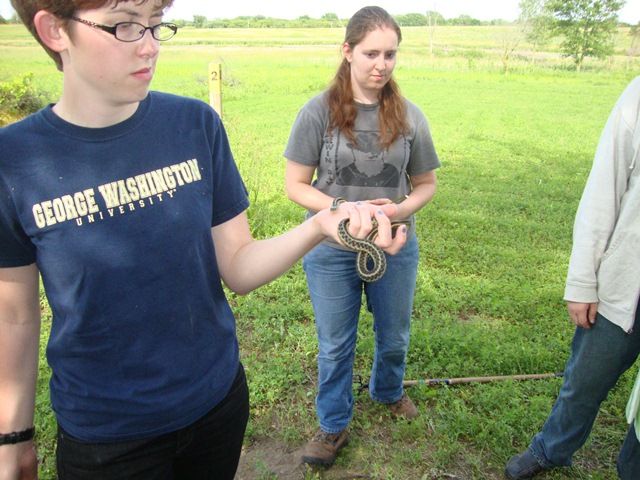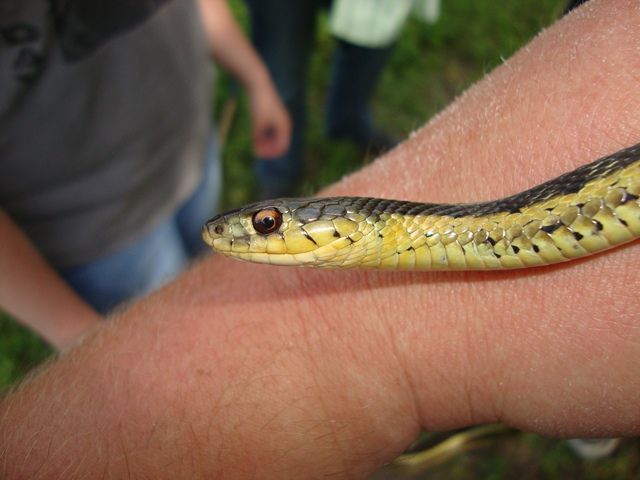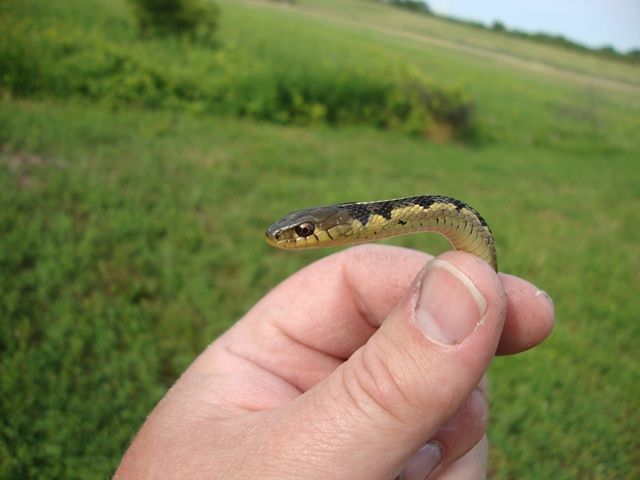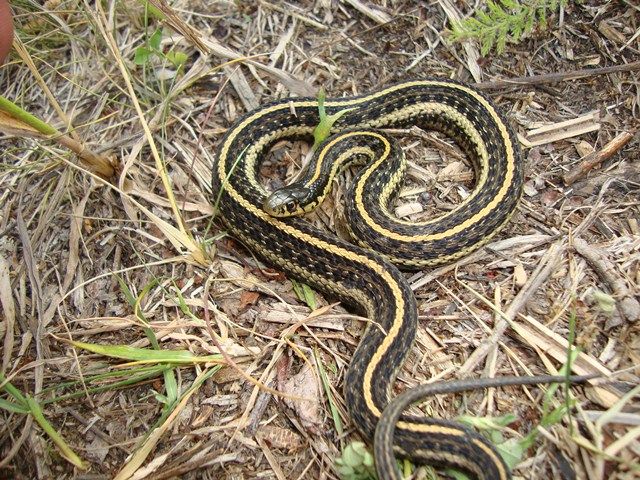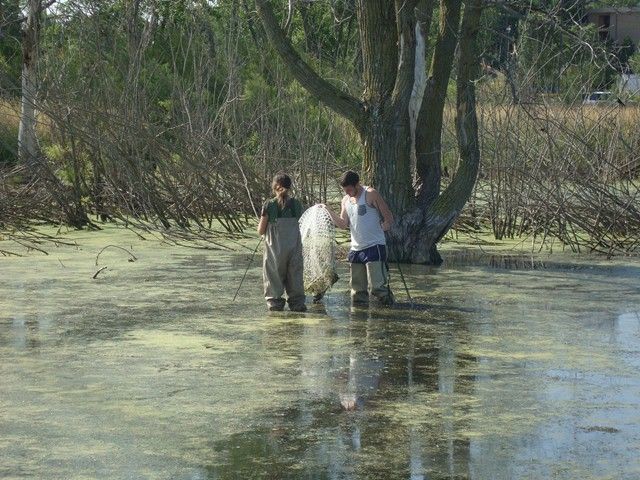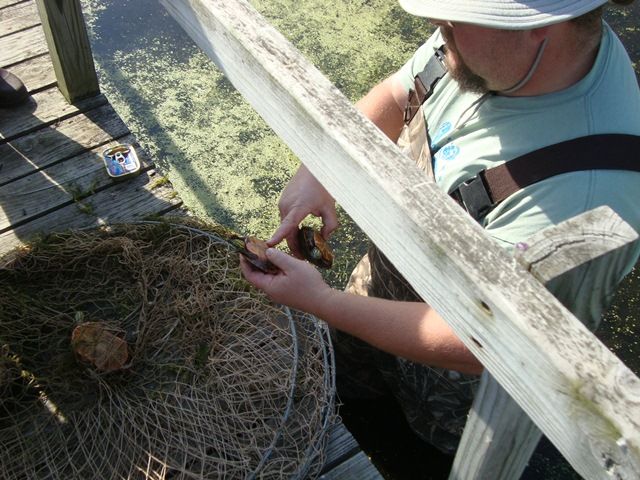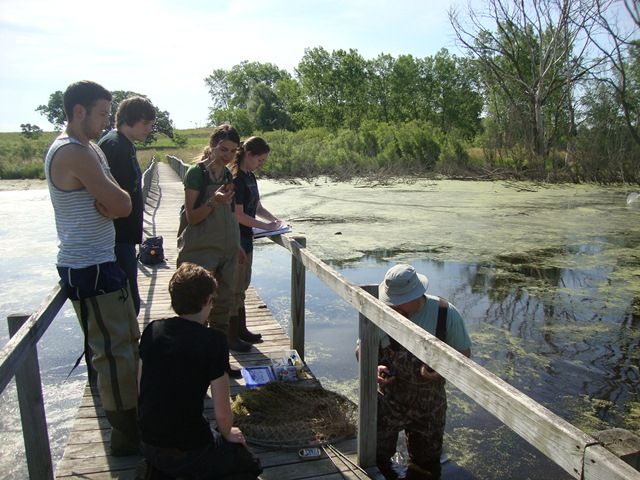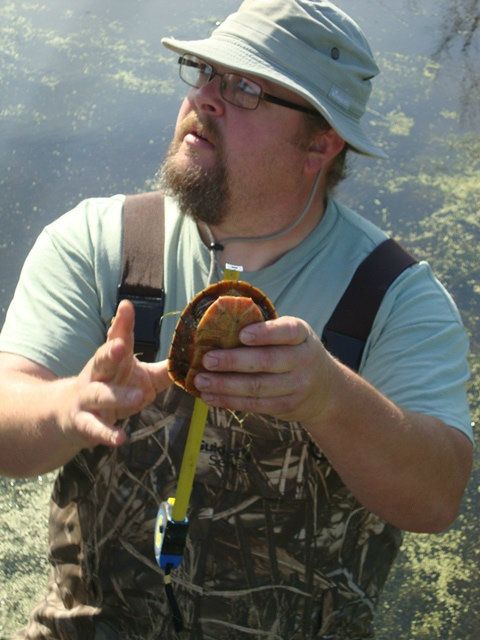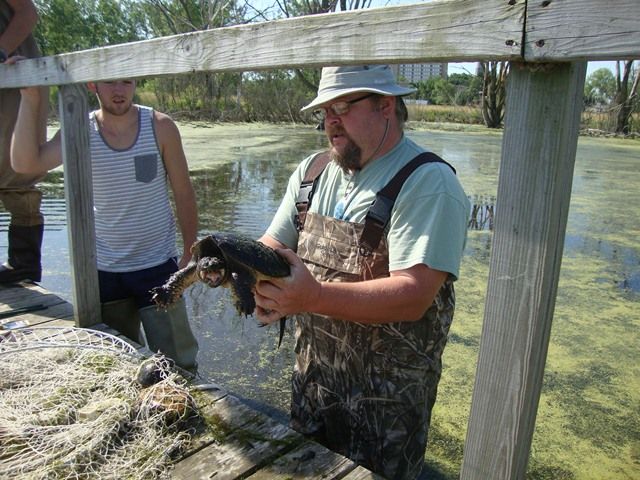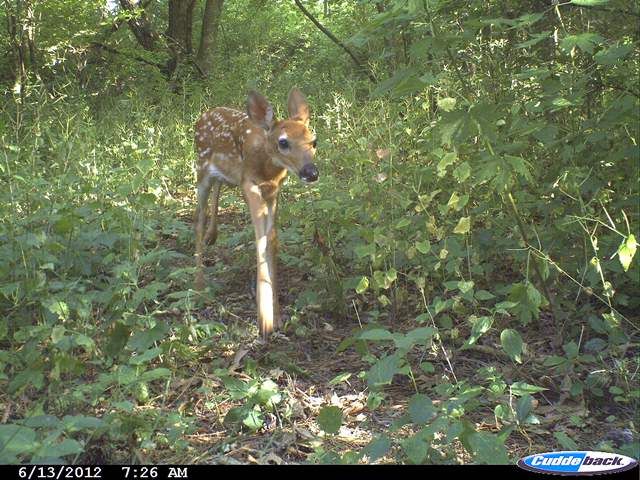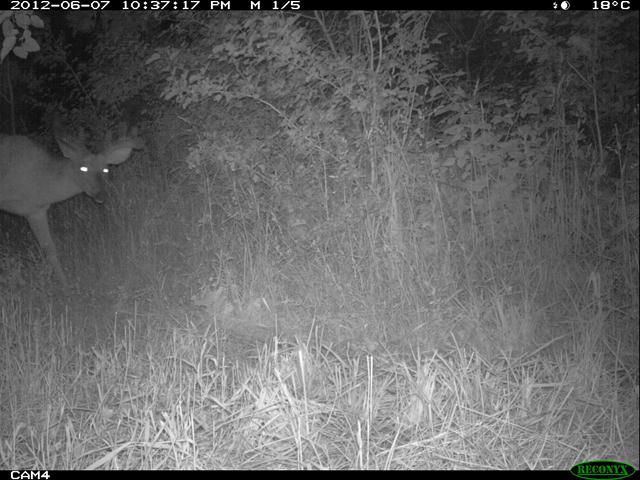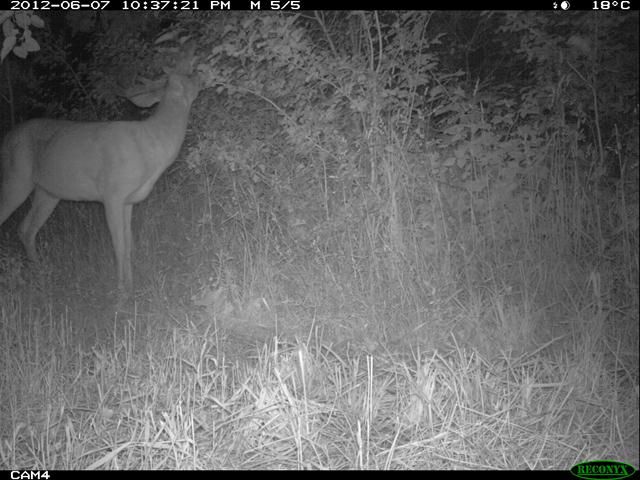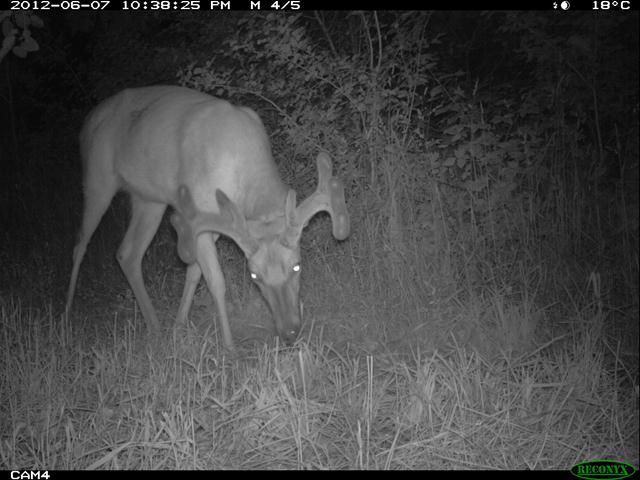We offer a semester-long course in field methods for our Ecology majors. They are exposed to a variety of techniques, ranging from plant identification/collection-making and tree community composition analyses, to aquatic sampling methods, to techniques for surveying vertebrates. The summer session version of this course offers some unique opportunities for sampling amphibians and reptiles because....well....it's warm out!
There is a small wetland on campus. It's shallow and warm. It's also incredibly productive (teeming with aquatic invertebrates, vegetation, and ampibians)....a great place for turtles. In fact, turtles in this wetland undergo a fairly treacherous journey every spring and fall. They leave the shallow wetland and migrate across a road to a nearby stream, where they spend the winter (
a journey I've commented on before). Once they are in the wetland, it's easy street.....assuming some annoying university professor and his students don't screw up your whole morning by setting turtle traps!
The traps we use are of a size and type that is accepted by our state regulatory agency. These regulations vary by state (even down to a specific mesh size), so make sure you know these before throwing out turtle traps. The traps themselves are not particularly difficult, once things have been explained a bit...
Basically, the mechanics of setting the traps is easy. Finding the best location is one of the most challenging parts of turtle trapping. Also, finding what type of bait works the best is very important. I've tried alot of bait in my day (dog food, cat food, tuna, fish guts) and the best all-purpose turtle bait is a cracked tin of sardines! The brand doesn't even really matter.
Armed with their knowledge, the students plunged in to set their own traps for an overnight soak....
______________________________________________________________________
A commonly incorporated technique for sampling snakes involves the use of Artificial Cover Objects (ACOs). These are essentially a board laid flat on the ground (often CXD plywood in 3 ft x 4 ft sections is ideal. Once put into place, these boards are warmed by the sun, and also hold moisture, so that the conditions underneath become nice and warm and humid.....perfect for a thermoregulating ectotherm! In early May, the students in the summer session course measured out and deployed a 5 x 5 grid of these boards in a little prairie preserve on campus. We let the boards age for a few weeks, which gives the snakes some time to find the boards. So....in the late afternoon on the same day as setting the turtle traps.....we got out there as a group to check what was underneath.
We were not disappointed! In total we caught 17 snakes in about a half an hour of checking ACOs.
Many of the little live-bearing species that are native 'round these parts will use ACOs. For example, Brown Snakes (
Storeria dekayi), Red-Bellied Snakes (
Storeria occipitomaculata) are easy to capture using ACOs. Gartersnakes (genus Thamnophis) are also commonly captured with this method. There are several species in this genus that are native to our region, including the Common Gartersnake (
Thamnophis sirtalis).
All captured snakes were then processed, which meant learning to sex snakes and learning to record some very basic morphological characters (such as snout-to-vent length, tail length, and weight).
We then let the snakes go along their merry way!
_______________________________________________________________________
The next morning, it was time to check our turtle traps....and again....we were not disappointed!
Painted turtles (
Chrysemys picta) were the order of the day! We caught 12 total in our traps...
We then discussed methods for measuring and marking turtles.
We measured and marked all of our turtles, including a rather small Common Snapping Turtle (
Chelydra serpentina) with attitude to burn.
These marked turtles will now be part of an ongoing long-term population monitoring project carried out by students in this little wetland.
